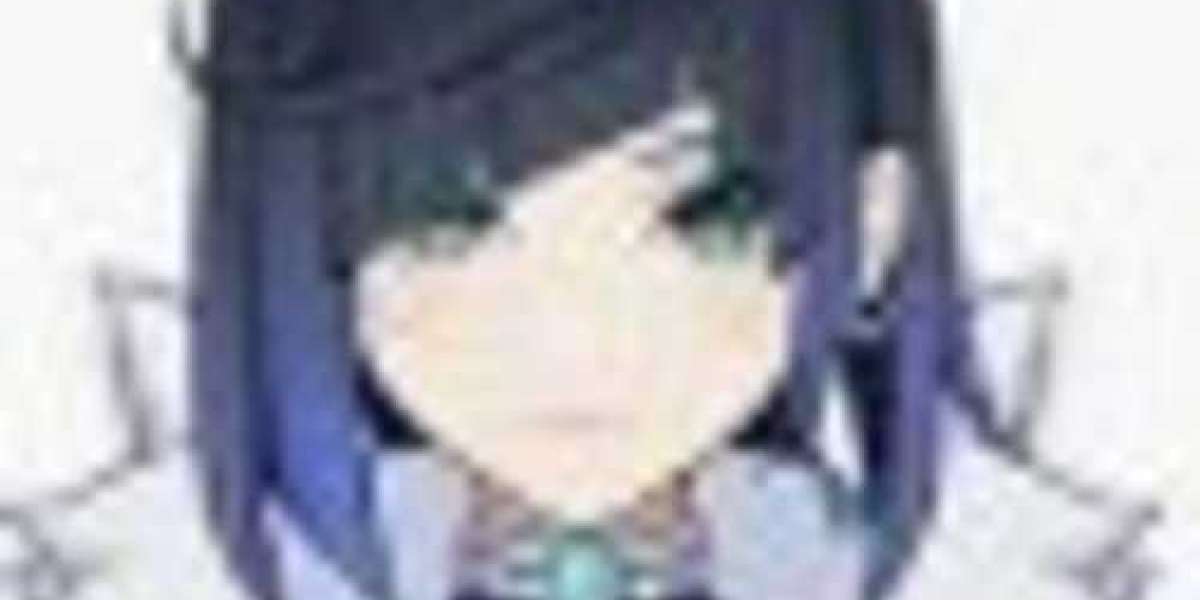Original Title: Illustration of Common Wires, Wire Connection Methods and Electrical Wire Connection Methods Wire connection is a basic process of electrical work, and it is also a very important process. The quality of conductor connection is directly related to whether the whole line can operate safely and reliably for a long time. The basic requirements for wire connection are: firm and reliable connection, small joint resistance, high mechanical strength, corrosion and oxidation resistance, and good electrical insulation performance. Different types of wires to be connected and different connection forms lead to different connection methods. Commonly used connection methods are twisted connection, compression connection, welding and so on. Before connection, carefully strip off the insulation layer at the connection part of the conductor, and pay attention not to damage the core wire. 1. Stranded connection Stranded connection refers to the direct and tight stranding of the core wires of the conductor to be connected. Copper conductors are often connected by stranding. (1) Direct connection of single copper conductor. The connection method of small-section single-strand copper conductor is as shown in Figure 1. First, cross the core wire ends of the two conductors in an X shape, then wind them for 2 to 3 circles, straighten the two wire ends, and then wind each wire end tightly on the other core wire for 5 to 6 circles, and then cut off the redundant wire ends. Fig. 1 The connection method of large-section single-strand copper conductors is as shown in Fig. 2. First, a core wire with the same diameter is filled in the overlapping part of the core wires of the two conductors, and then a bare copper wire with a section of about 1.5mm2 is tightly wound on it, the winding length is about 10 times the diameter of the conductor, and then the core wire ends of the connected conductors are folded back respectively. Continue to wind the bare copper wire at both ends for 5 to 6 circles, and then cut off the excess wire ends. Fig. 2 The connection method of single-strand copper conductors with different cross sections is as shown in Fig. 3. First, tightly wind the core wire of the thin conductor on the core wire of the thick conductor for 5 to 6 circles, and then fold back the thread head of the thick conductor core wire and press it tightly on the winding layer. Then, continue to wind the thin conductor core wire on it for 3 to 4 circles, and then cut off the redundant thread head. (2) Branch connection of single copper conductor. The T-shaped branch connection of the single-strand copper conductor is shown in Figure 4. Wrap the wire ends of the branch core wire tightly on the trunk core wire for 5 to 8 circles, and then cut off the redundant wire ends. For the core wire with a small cross section, first tie the thread end of the branch core wire on the trunk core wire with a loop knot, and then tightly wind it for 5 to 8 circles, and then cut off the excess thread end. Expand the full text Fig. 4 Cross branch connection of single-strand copper conductor As shown in Fig. 5,ti6al4v, tightly wind the wire ends of the upper and lower branch core wires on the trunk core wire for 5 to 8 circles, and then cut off the redundant wire ends. The wire ends of the upper and lower branch core wires may be wound in one direction [see fig. 5 (a)] or in both left and right directions [see fig. 5 (B)]. Fig. 5 (3) Direct connection of stranded copper conductors. The direct connection of multi-strand copper conductor is shown in Figure 6. Firstly, straighten the multi-strand core wire with the insulation layer stripped, twist and tighten about 1/3 of the core wire close to the insulation layer, and spread the remaining 2/3 of the core wire in an umbrella shape. The core wire of another conductor to be connected is also treated in this way. Then the two umbrella-shaped core wires are inserted into each other oppositely and then the core wires are kneaded, and then the thread ends of the core wires on each side are divided into three groups, wherein the thread ends of the first group on one side are firstly warped and tightly wound on the core wire, then the thread heads of the second group are warped and tightly wound on the core wire, and finally the thread heads of the third group are warped and tightly wrapped on the cores. Wrap the thread ends on the other side in the same way. Fig. 6 (4) Branch connection of multi-strand copper conductor. There are two methods for T-shaped branch connection of multi-strand copper conductor. One method is as shown in Figure 7. The branch core wire is bent by 90 ° and then parallel to the trunk core wire [see Figure 7 (a)], and then the wire end is folded back and tightly wound on the core wire [see Figure 7 (B)]. Fig. 7 Another method is as shown in Fig. 8. Twist and tighten about 1/8 core wires of the branch core wires close to the insulation layer, and divide the remaining 7/8 core wires into two groups [see Fig. 8 (a)]. One group is inserted into the trunk core wires,ti6al4v eli, and the other group is placed in front of the trunk core wires, and wound 4 to 5 turns to the right in the direction shown in Fig. 8 (B). Then, wind the group inserted into the core wires of the trunk for 4 to 5 turns toward the left in the direction shown in Fig. 8 (C), and the connected wires are shown in Fig. 8 (d). Fig. 8 (5) Connection of single-strand copper conductor and multi-strand copper conductor. The connection method of the single-strand copper conductor and the multi-strand copper conductor is shown in Figure 9. First, twist the core wire of the multi-strand conductor into a single-strand shape, and then tightly wind it on the core wire of the single-strand conductor for 5 to 8 circles. Finally, fold back the end of the single-stranded core wire and press it on the winding position. (6) Connection of wires in the same direction. When the wires to be connected are from the same direction, the method shown in fig. 10 can be used. For a single-strand conductor, the core wire of one conductor can be tightly wound on the core wires of other conductors, and then the thread ends of the other core wires are folded back and pressed tightly. For multi-strand conductors, the cores of two conductors can be crossed with each other and then twisted and tightened. For the connection of a single-strand wire and a multi-strand wire, the core wire of the multi-strand wire can be tightly wound on the core wire of the single-strand wire, and then the thread end of the single-strand core wire is folded back and compacted. Figure 9 Fig. 10 (7) Connection of two-core or multi-core wires and cables. During the connection of double-core sheathed wires, three-core sheathed wires or cables and multi-core cables, the connection points of each core wire shall be staggered as far as possible to better prevent electric leakage or short circuit between wires. Fig. 11 (a) shows the connection of the two-core sheathed cable, Fig. 11 (B) shows the connection of the three-core sheathed cable, and Fig 11 (C) shows the connections of the four-core power cable. Fig. 11 Although the aluminum conductor can also be connected by stranding, the surface of the aluminum core wire is very easy to oxidize, which will cause line failure over time, so the aluminum conductor is usually connected by pressing. 2. Pressing connection Pressing connection means that a copper or aluminum sleeve is sleeved on the connected core wire, Titanium 6Al4V wire ,titanium filler rod, and then the sleeve is pressed with a crimping plier or a crimping die to keep the core wire connected. Copper conductor (generally thick copper conductor) and aluminum conductor can be connected by pressing. Copper conductor shall be connected by copper sleeve, and aluminum conductor shall be connected by aluminum sleeve. The oxide layer and sticky dirt on the surface of the conductor core and the inner wall of the crimping sleeve shall be removed before the crimping connection to ensure good contact. (1) Compression bonding of copper or aluminum conductors. There are two types of crimping sleeve sections, round and oval, as shown in Fig. 12. A conductor can be inserted into the circular section sleeve, and two conductors can be inserted into the elliptical section sleeve side by side. When the circular section sleeve is used, insert the core wires of the two wires to be connected into the sleeve from the left and right ends by the same length, so as to keep the connection point of the wire ends of the two core wires in the middle of the sleeve, as shown in Figure 13 (a). Then use crimping pliers or crimping dies to press the bushing tightly. In general, only one pit is pressed at each end to meet the requirements of contact resistance. Where mechanical strength is required, two pits may be pressed at each end, as shown in fig. 13 (B). For thicker wires or occasions with higher mechanical strength requirements, the number of pits can be increased appropriately. Figure 13 When using the sleeve with elliptical section, insert the core wires of the two wires to be connected from the left and right ends respectively and pass through the sleeve a little, as shown in Figure 14 (a), and then press the sleeve tightly, as shown in Figure 14 (B). The oval cross section bushing can be used not only for straight crimping of conductors, but also for crimping of conductors in the same direction, as shown in Fig. 14 (C); it can also be used for T-shaped branch crimping or cross-shaped branch crimping, as shown in Fig. 14 (d) and 14 (e). Fig. 14 (2) Pressing connection between copper conductor and aluminum conductor. When it is necessary to connect a copper conductor to an aluminum conductor, measures must be taken to prevent galvanic corrosion. Because the standard electrode potentials of copper and aluminum are different, if the copper conductor and the aluminum conductor are directly spliced or crimped, galvanic corrosion will occur on the contact surface, causing the contact resistance to increase and overheating, resulting in line failure. There are two common connection methods to prevent galvanic corrosion. One method is to use a copper-aluminum connection sleeve. One end of the copper-aluminum connecting sleeve is made of copper, and the other end is made of aluminum, as shown in Figure 15 (a). When in use, insert the core wire of the copper wire into the copper end of the sleeve, insert the core wire of the aluminum wire into the aluminum end of the sleeve, and then press the sleeve tightly, as shown in Figure 15 (B). Fig. 15 Another method is to connect the copper conductor with aluminum sleeve after tin plating. Because of the small difference between the standard electrode potentials of tin and aluminum, a layer of tin sandwiched between copper and aluminum can also prevent galvanic corrosion. The specific method is to plate a layer of tin on the core wire of the copper conductor, insert the tinned copper core wire into one end of the aluminum sleeve, insert the core wire of the aluminum conductor into the other end of the sleeve, and finally compress the sleeve, as shown in Figure 16. 3. Welding Welding refers to the melting and fusion of metal (solder such as solder or the wire itself) to connect the wire. The welding types of wire connection in electrical technology include tin welding, resistance welding, arc welding, gas welding, brazing, etc. Fig. 16 (1) Soldering of copper conductor joint. Thinner copper conductor joints can be soldered with a high power (e.g. 150 W) soldering iron. Before welding, the oxide layer and dirt at the joint of the copper core wire shall be removed. In order to increase the connection reliability and mechanical strength, the two core wires to be connected can be twisted first, then coated with acid-free flux, and soldered with an electric iron dipped in soldering tin, as shown in Figure 17. During welding, the solder shall be fully melted and penetrated into the gap of the conductor joint, and the welded joint shall be firm and smooth. Fig. 17 Copper conductor joints with thick section (generally more than 16 mm2) can be connected by pouring and welding. Before pouring and welding, the oxide layer and dirt at the joint of the copper core wire shall also be removed, acid-free flux shall be applied, and the wire ends shall be twisted. The soldering tin is placed in a tin melting pot to be heated and melted, and when the surface of the melted soldering tin is phosphorus yellow, which indicates that the tin liquid has reached the required high temperature, the soldering can be carried out. When pouring and welding, place the conductor joint above the tin melting pot, and pour the tin liquid from the conductor joint with a high temperature resistant spoon, as shown in Figure 18. At the beginning of pouring and welding, due to the low temperature of the conductor joint, the tin liquid will not penetrate into the joint well, so it should be poured and welded repeatedly until it is completely welded. The surface of the cast-welded joint shall also be smooth. (2) Welding of aluminum conductor joints. Resistance welding or gas welding is generally used for the welding of aluminum conductor joints. Resistance welding refers to the use of low voltage and large current through the connection of aluminum wires, using the high temperature and high heat generated by its contact resistance to weld the aluminum core wires together. Resistance welding shall use a special step-down transformer (1 kVA, primary 220V, secondary 6 ~ 12V) with special welding tongs and carbon rod electrodes, as shown in Figure 19. Fig. 18 Gas welding refers to the use of the high-temperature flame of the gas welding gun to heat the connection points of the aluminum core wires,Titanium 6Al4V wire, so that the aluminum core wires to be connected are melted and connected with each other. Before gas welding, the aluminum core wires to be connected shall be stranded or bound with aluminum wires or iron wires, as shown in Fig. 19. Source: Electrician Electrical Learning Figure 19 Return to Sohu to see more Responsible Editor:. yunchtitanium.com
Hanson
15 blog posts



